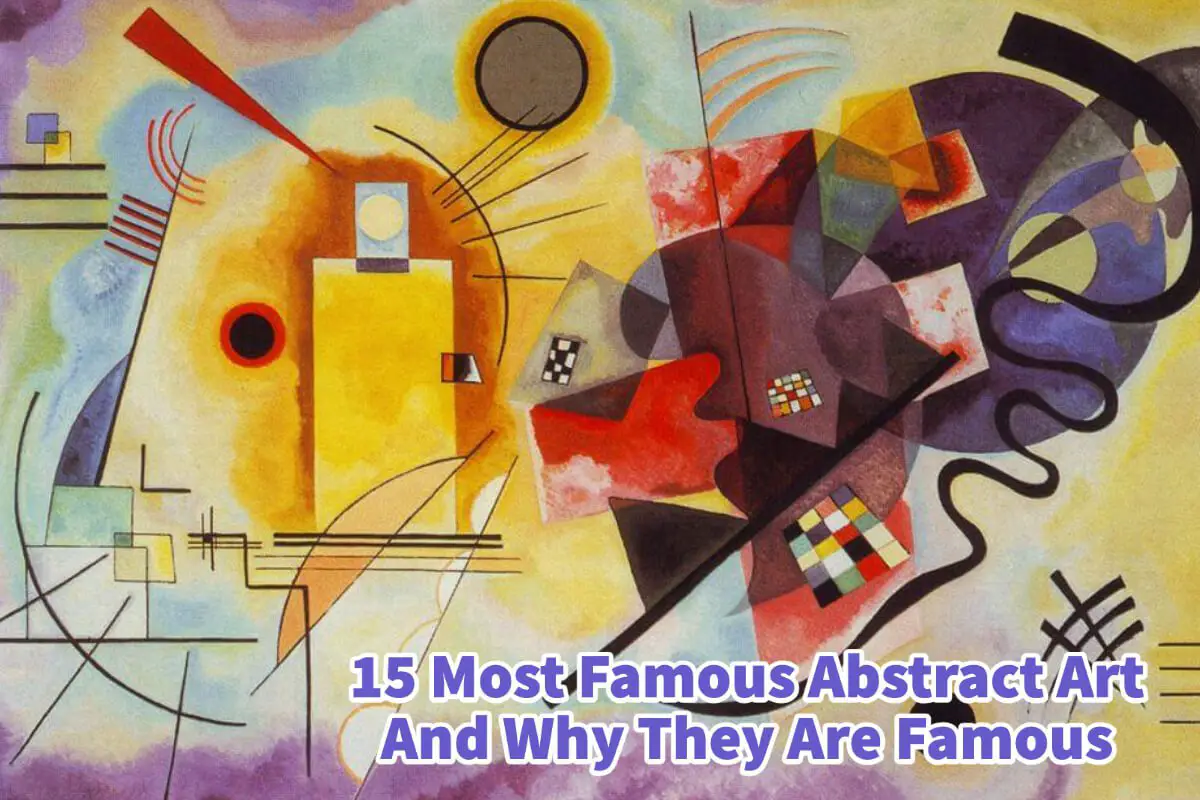One of my favorite kinds of art is Abstract art. I love how Abstract art breaks from all the constraints on art for centuries.
There are many great abstract works of art, so choosing my favorite 15 works can be challenging. But we have chosen 15 of our favorite works of art and why we consider them to be not only famous but also why they are essential. Read on as we will explore 15 of the most famous abstract artworks, delving into the artists’ names, the years of creation, and the reasons behind their enduring fame.
Table of Contents
- Our 15 Top Most Famous Abstract Art And Why They Are Famous
- “The Starry Night” by Vincent van Gogh (1889)
- “Composition VII” by Wassily Kandinsky (1913)
- “Les Demoiselles d’Avignon” by Pablo Picasso (1907)
- “No. 5, 1948” by Jackson Pollock (1948)
- “Black Square” by Kazimir Malevich (1915)
- “Broadway Boogie-Woogie” by Piet Mondrian (1942-43)
- “Number 1A, 1948” by Jackson Pollock (1948)
- “Homage to the Square” by Josef Albers (1950)
- “Woman, I” by Willem de Kooning (1950-1952)
- “Blue Poles” by Jackson Pollock (1952)
- “Composition with Red, Blue, and Yellow” by Piet Mondrian (1930)
- “Number 31” by Jackson Pollock (1950)
- “Yellow-Red-Blue” by Wassily Kandinsky (1925)
- “White Center (Yellow, Pink, and Lavender on Rose)” by Mark Rothko (1950)
- “Orange, Red, Yellow” by Mark Rothko (1961)
- Frequently Asked Questions
- Related Questions
Our 15 Top Most Famous Abstract Art And Why They Are Famous
Abstract art is a unique form of artistic expression that breaks away from the constraints of realistic representation and instead focuses on the power of colors, shapes, lines, and forms. Throughout history, numerous abstract artworks have captivated audiences and left a lasting impact on the art world.
“The Starry Night” by Vincent van Gogh (1889)
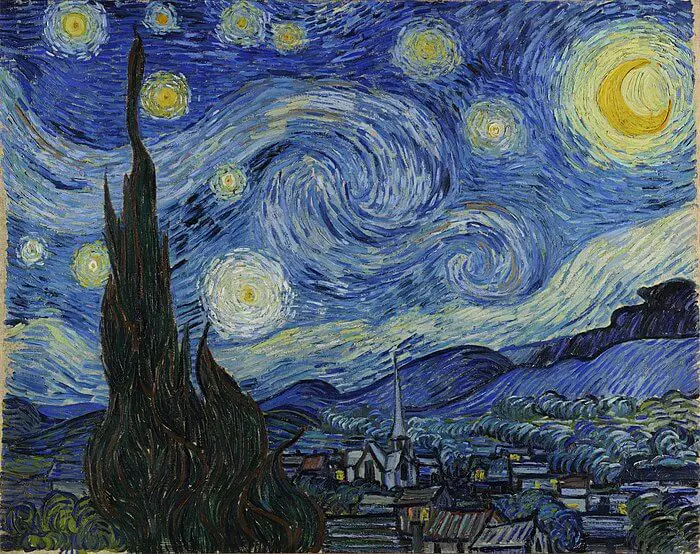
The Starry Night” is perhaps one of the most iconic works in art history. This masterpiece portrays a swirling night sky above a tranquil village, created by Vincent van Gogh during his stay at the Saint-Paul-de-Mausole asylum in France,
Van Gogh’s bold brushstrokes, vibrant colors, and profound emotional expression have made “The Starry Night” an emblem of the artist’s genius.
“Composition VII” by Wassily Kandinsky (1913)

Wassily Kandinsky, a pioneer of abstract art, created “Composition VII” during his tenure at the Blue Rider Almanac. This monumental painting showcases his innovative use of geometric shapes and vivid colors to evoke an emotional response.
“Composition VII” is revered for its non-representational form, encouraging viewers to interpret the artwork freely.
“Les Demoiselles d’Avignon” by Pablo Picasso (1907)
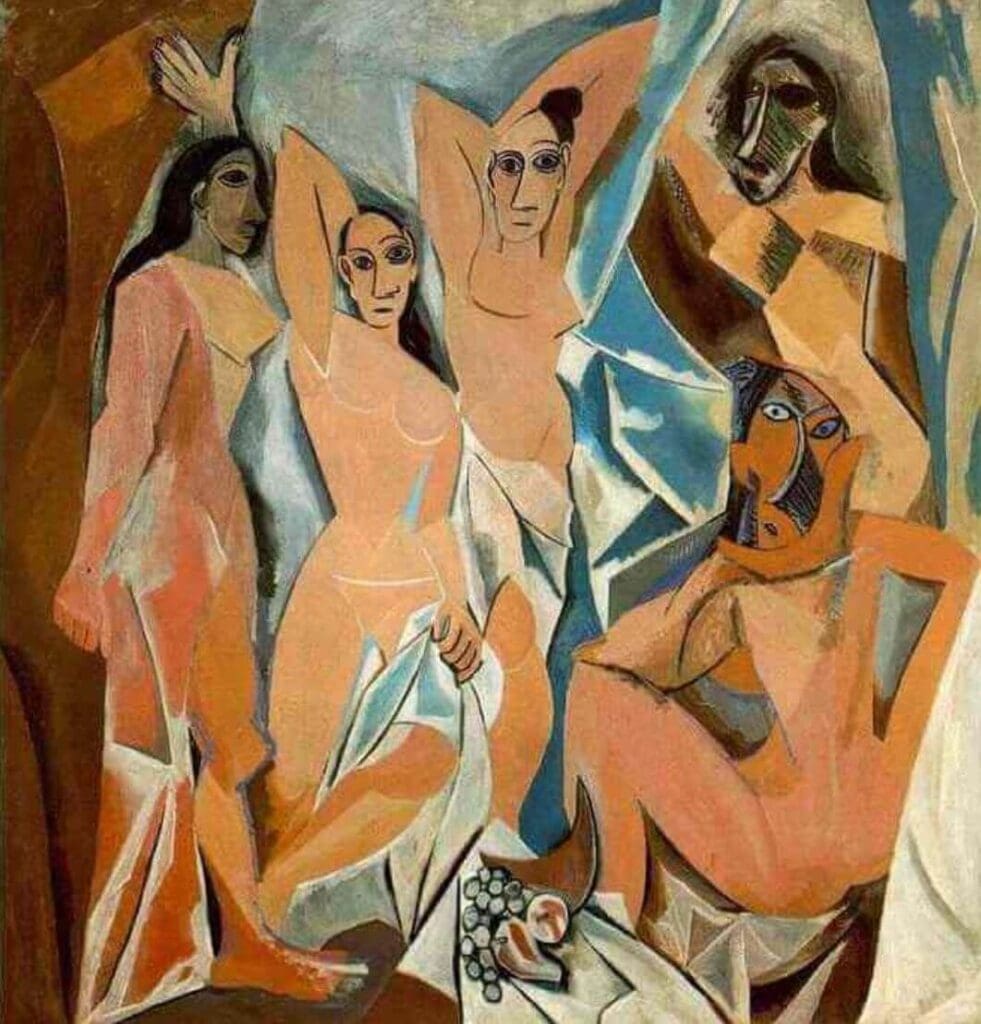
Les Demoiselles d’Avignon” is a groundbreaking painting by Pablo Picasso that signaled the advent of Cubism. Picasso’s departure from traditional artistic conventions and his fragmented representation of the human form made this artwork both revolutionary and controversial. It remains an emblem of the artist’s immense influence on the art world.
“No. 5, 1948” by Jackson Pollock (1948)
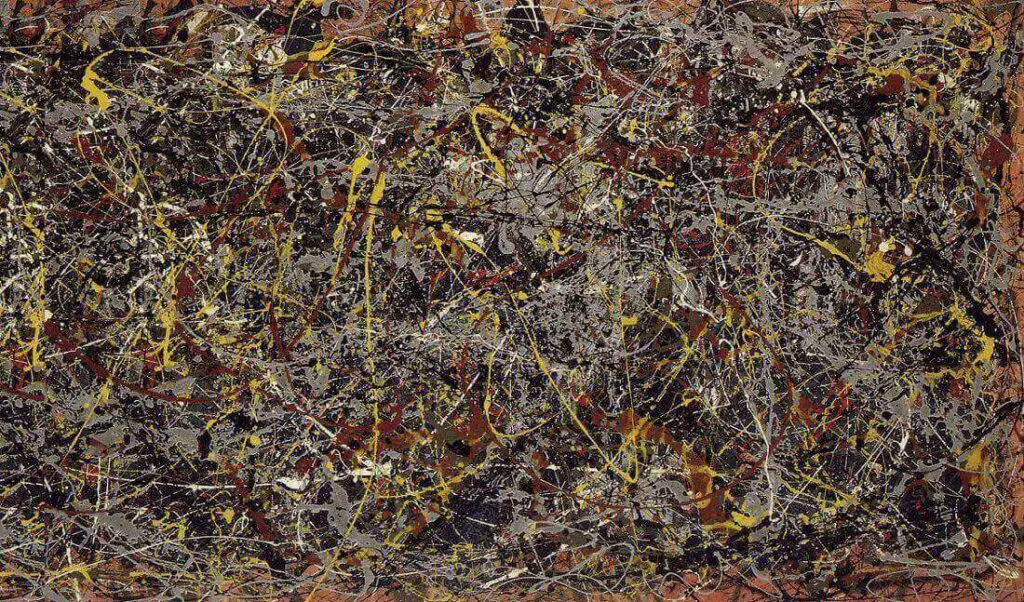
Jackson Pollock’s “No. 5, 1948” is an exemplary piece of abstract expressionism. Pollock pioneered the technique of drip painting, and this particular artwork exemplifies his spontaneous and energetic style.
Despite its seemingly chaotic composition, “No. 5, 1948” conveys a sense of harmony and balance, captivating viewers and solidifying Pollock’s status as an abstract art icon.
“Black Square” by Kazimir Malevich (1915)

Kazimir Malevich’s “Black Square” is a seminal work in abstract art. Composed of a simple black square on a white background, this painting embodies the Suprematist movement, which sought to reduce art to its purest form.
“Black Square” challenges conventional notions of representation, pushing the boundaries of artistic expression.
“Broadway Boogie-Woogie” by Piet Mondrian (1942-43)

Piet Mondrian’s “Broadway Boogie-Woogie” is a testament to the artist’s lifelong exploration of geometric abstraction. Inspired by the bustling streets of New York City, this painting features an intricate grid of colorful squares and rectangles.
Mondrian’s meticulous placement of lines and primary colors creates a rhythmic and dynamic visual experience.
“Number 1A, 1948” by Jackson Pollock (1948)
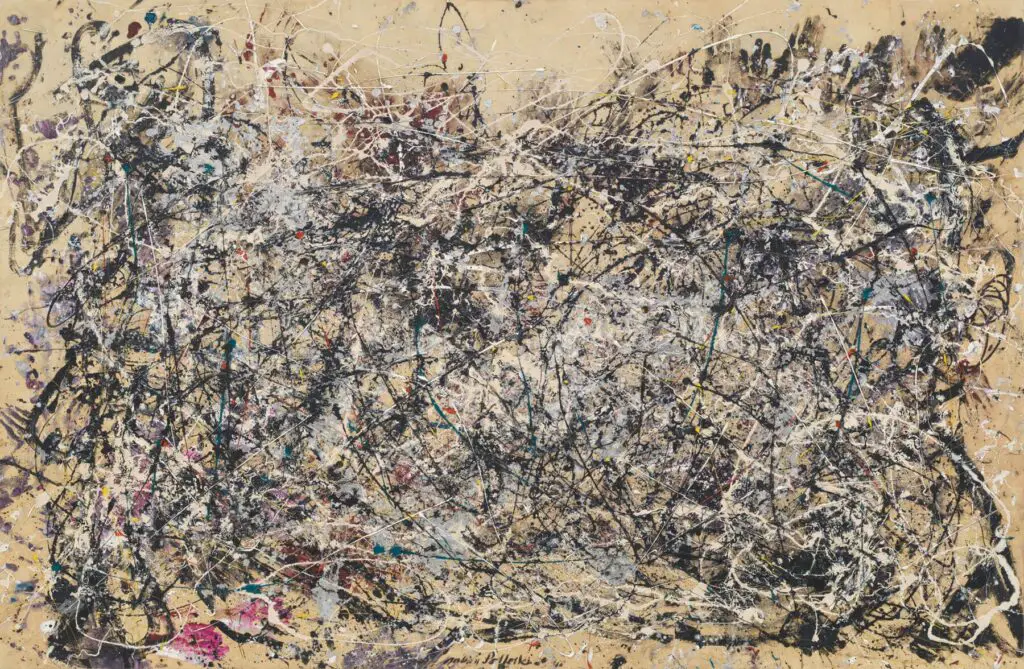
Jackson Pollock’s “Number 1A, 1948” is an iconic example of abstract expressionism. This large-scale painting exudes raw energy and emotion through its dynamic brushwork and bold color palette.
Number 1A, 1948″ represents the artist’s ability to convey a sense of movement and intensity through his abstract compositions.
“Homage to the Square” by Josef Albers (1950)
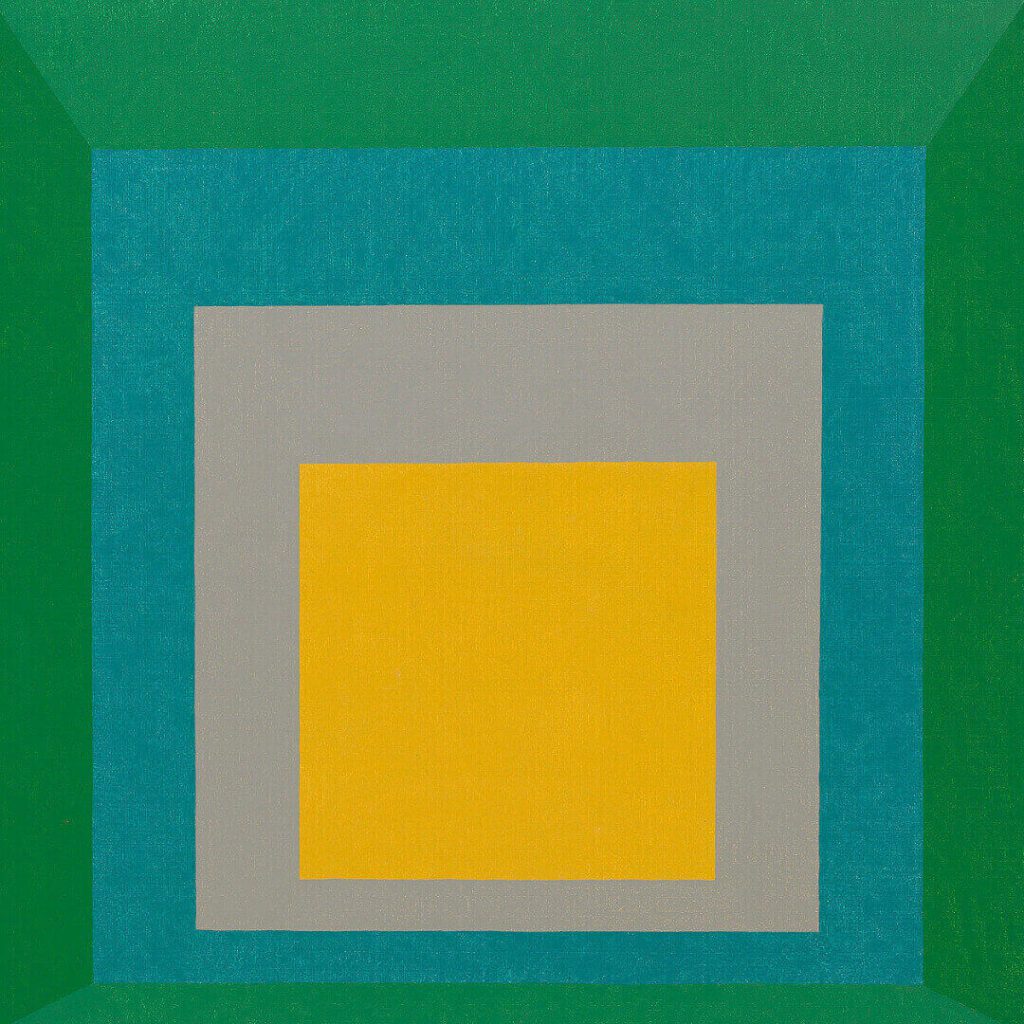
Josef Albers’ “Homage to the Square” series consists of numerous paintings exploring the interaction of colors within a square format. Albers, a renowned color theorist, meticulously studied the relationships between hues and their optical effects.
Through the repetition of squares and careful color placement, Albers created a visual experience that challenges viewers’ perceptions and showcases the power of color interaction.
“Woman, I” by Willem de Kooning (1950-1952)
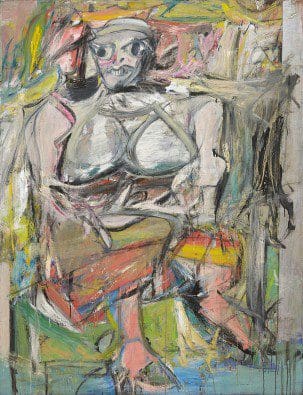
Willem de Kooning’s “Woman, I” is a remarkable example of abstract expressionism combined with elements of figurative art. The painting features a fierce and fragmented female figure created with vigorous brushstrokes and expressive gestures.
“Woman, I” sparked both admiration and controversy, as it challenged traditional notions of beauty and femininity, establishing de Kooning as a prominent figure in the art world.
“Blue Poles” by Jackson Pollock (1952)
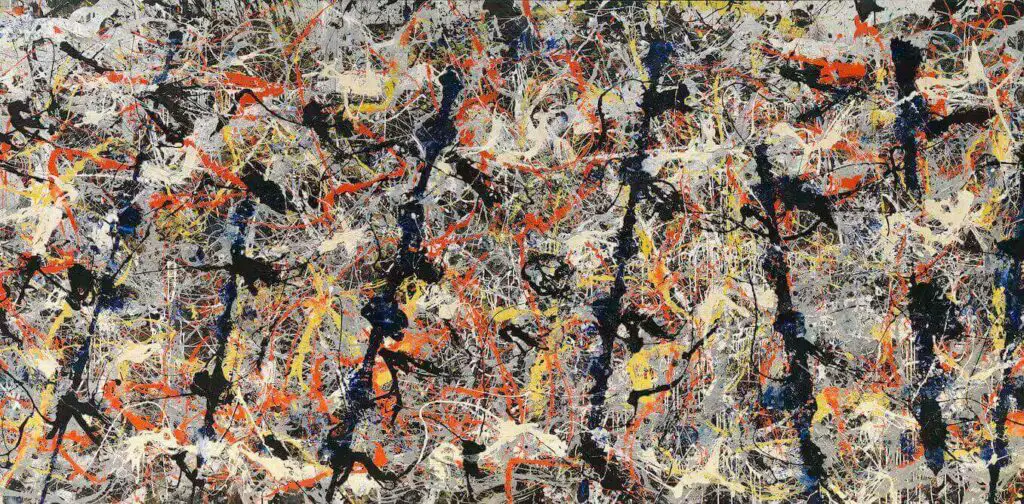
Blue Poles” is an iconic work by Jackson Pollock, known for his revolutionary drip painting technique. This painting stands out due to its large size and the vertical poles penetrating composition.
Pollock’s characteristic drips and splatters of vibrant blue paint create a sense of movement and depth, mesmerizing viewers with its chaotic yet harmonious energy.
“Composition with Red, Blue, and Yellow” by Piet Mondrian (1930)
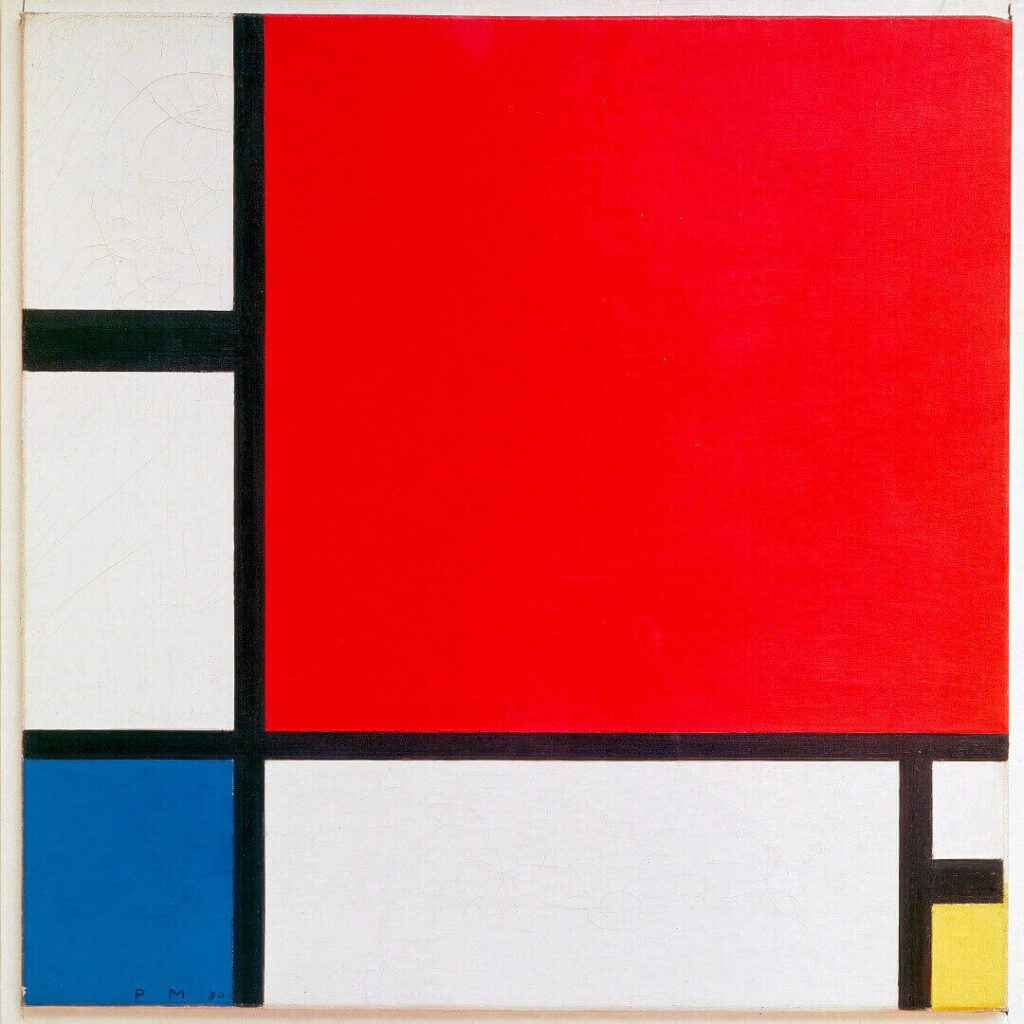
Piet Mondrian’s “Composition with Red, Blue, and Yellow” exemplifies the artist’s exploration of neoplasticism, a movement that sought to reduce art to its fundamental elements.
The painting consists of a grid of primary colors and black lines, showcasing Mondrian’s commitment to simplicity and balance. This iconic artwork has become synonymous with the principles of abstract art and has inspired countless artists and designers.
“Number 31” by Jackson Pollock (1950)
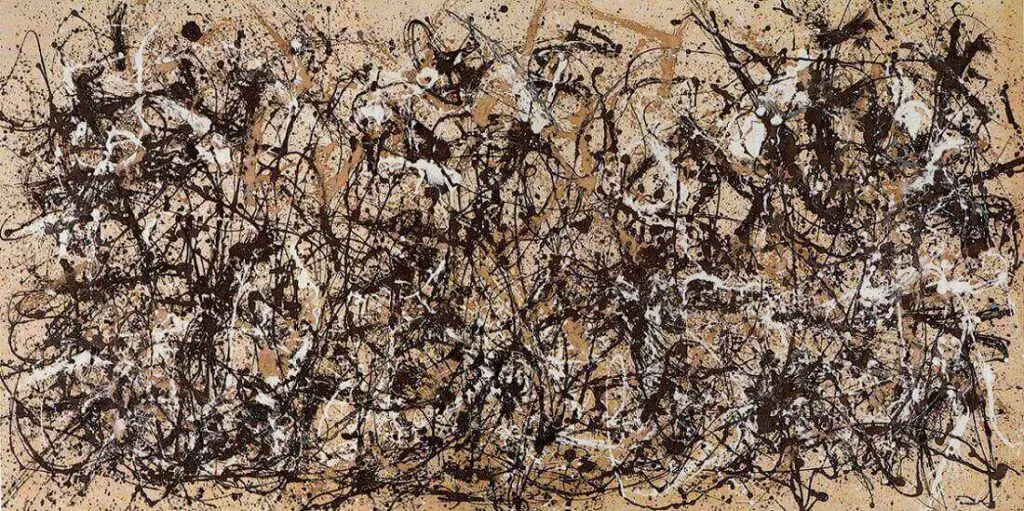
Jackson Pollock’s “Number 31” is a visually captivating piece characterized by its intricate and densely layered composition. Pollock’s signature drip technique is on full display, with layers of paint intertwining and overlapping to create a rich textured surface.
“Number 31” captures the essence of abstract expressionism, inviting viewers to explore the depths of its complex and dynamic imagery.
“Yellow-Red-Blue” by Wassily Kandinsky (1925)
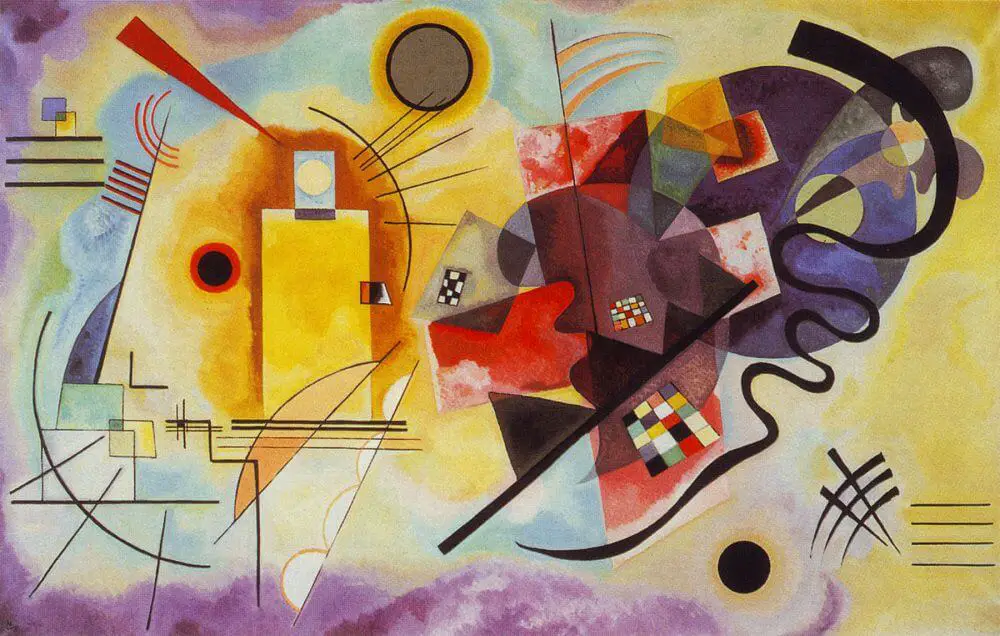
“Yellow-Red-Blue” is a seminal work by Wassily Kandinsky, a leading figure in abstract art. This composition showcases Kandinsky’s masterful use of colors and geometric shapes to evoke spiritual and emotional responses.
Through the harmonious interaction of yellow, red, and blue, Kandinsky creates a visual symphony that transcends the boundaries of prefigurative.
“White Center (Yellow, Pink, and Lavender on Rose)” by Mark Rothko (1950)
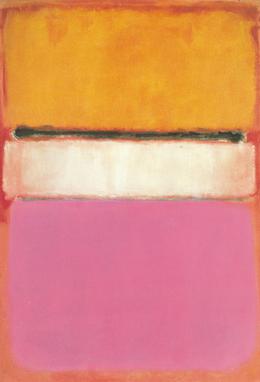
Mark Rothko’s “White Center” is a prime example of his signature style, color field painting. This large-scale artwork consists of rectangular forms layered together, creating a luminous and immersive visual experience.
Rothko’s carefully selected colors and soft edges evoke contemplation and introspection, making “White Center” a powerful representation of abstract expressionism.
“Orange, Red, Yellow” by Mark Rothko (1961)

Mark Rothko’s “Orange, Red, Yellow” is another iconic painting that exemplifies his mastery of color and form. This artwork consists of vibrant rectangular blocks, which seem to float and interact on the canvas.
Rothko intended to create an emotional and spiritual connection with the viewer, inviting them to immerse themselves in the contemplation of pure color and its impact on the human psyche.
This blog post’s 15 most famous abstract artworks represent verse artists, styles, and periods. From Van Gogh’s emotionally charged “The Starry Night” to Kandinsky’s groundbreaking “Composition VII” and Pollock’s revolutionary drip paintings, each artwork has left an indelible mark on the art world.
These abstract masterpieces have achieved fame for various reasons. Some challenged the conventions of representation, like Picasso’s “Les Demoiselles d’Avignon.” In contrast, others explored the power of color and form, such as Mondrian’s “Broadway Boogie-Woogie” and Albers’ “Homage to the Square” series.
Many of these artworks pushed the boundaries of artistic expression, inviting viewers to interpret and engage with the pieces on a personal level.
Abstract art convokes emotions, sparks the imagination, and ignites conversations about art’s nature. It transcends the confines of traditional representation, allowing artists to communicate their ideas and visions more abstractly and symbolically.
As we appreciate these famous abstract artworks, we are reminded of the artist’s mense creativity, innovation, and courage to find them. Their contributions have shaped that history and continue to inspire and influence generations of artists and art enthusiasts.
Abstract art remains a vital and influential force in the art world. The 15 artworks discussed here represent a fraction of the countless abstract masterpieces that have captivated audiences throughout history. Their enduring fame is a testament to abstract art’s timeless appeal and significance, reminding us of the limitless possibilities of artistic expression.
Frequently Asked Questions
What is abstract art, and how does it differ from traditional art forms?
Abstract art is a departure from representational forms, focusing on shapes, colors, and lines to convey emotions or ideas. Learn how it breaks away from traditional artistic constraints.
Who is Wassily Kandinsky, and why is his painting “Composition VII” considered a landmark in abstract art?
Explore the pioneering work of Wassily Kandinsky, a key figure in abstract art, and understand the significance of his masterpiece, “Composition VII.”
How did Kazimir Malevich’s “Black Square” revolutionize abstract art, and what symbolism does it carry?
Uncover the story behind Kazimir Malevich’s iconic “Black Square” and its role in shaping the evolution of abstract art, along with the symbolism embedded in this seemingly simple work.
What makes Piet Mondrian’s “Broadway Boogie Woogie” a unique representation of abstract art, and how does it reflect his artistic philosophy?
Delve into Piet Mondrian’s final masterpiece, “Broadway Boogie Woogie,” and understand how it encapsulates his lifelong exploration of geometric abstraction and dynamic rhythm.
Who is Joan Miró, and what elements in “The Birth of the World” contribute to its abstract and surreal qualities?
Explore the surreal world of Joan Miró and dissect the abstract elements within “The Birth of the World,” unveiling the artistic genius behind this iconic piece.
How did Mark Rothko’s “No. 5, 1948” become one of the most expensive paintings ever sold, and what emotions does it evoke?
Investigate the mystique surrounding Mark Rothko’s “No. 5, 1948,” and understand the factors that contributed to its immense value and the emotional impact it delivers.
What role did Yves Klein play in the development of abstract art, and how does “Blue Monochrome” reflect his artistic vision?
Uncover Yves Klein’s influence on abstract art and explore the profound simplicity of “Blue Monochrome,” a work that encapsulates his unique approach to color and form.
Why is Jackson Pollock’s “Autumn Rhythm” celebrated as a groundbreaking example of abstract expressionism, and what techniques did he employ?
Explore the energetic world of Jackson Pollock and dissect the revolutionary techniques behind “Autumn Rhythm,” a masterpiece that redefined the possibilities of abstract expressionism.
How does the collaboration between Jean Arp and Sophie Taeuber-Arp in “Configuration” exemplify the essence of abstract art in a dual artistic creation?
Understand the collaborative spirit in abstract art through the partnership of Jean Arp and Sophie Taeuber-Arp, as seen in their mesmerizing work, “Configuration.”
What role did the “Starry Night” by Vassily Kandinsky play in bridging the gap between abstraction and representation, and how does it showcase his artistic evolution?
Examine the transitional phase in Vassily Kandinsky’s career, as represented by “Starry Night,” and grasp its significance in connecting the realms of abstraction and representation in art.
Anita Louise Art is dedicated to art education, great artists, and inspiring others to find and create their art. We love art that uplifts and inspires. #ArtToMakeYouSmile! #ArtToMakeYouHappy!
If you want to see any of my art, you can find out more by clicking here. If you are interested in what inspires me and my paintings, you can discover more by clicking here.
We have a free newsletter and would love you to be part of our community; you can subscribe to the newsletter by clicking here. If you have any questions, I would be happy to talk to you. You can reach me, Anita, by clicking here.
Subscribe to our Anita Louise Art YouTube Channel, filled with great videos and information by clicking here.
Join us for our podcast “5 Minutes With Art.” Spend just 5 minutes a week with us to discover and learn about great art and artists. You can find out more about our podcast by clicking here.
Related Questions
What Was The Focus Of Renaissance Art?
The focus of Renaissance art was on the classics of Greek and Rome, humanist philosophy, and the study of the human figure. Realism was also an essential part of renaissance art. The great artists of the Renaissance also became great anatomists and studied human beings.
By clicking here, you can learn more by reading What Was The Focus Of Renaissance Art?.
What Is The Importance Of Art From The Renaissance Period?
Renaissance art is essential as it was a time of rebirth and discovery. Artists like Leonardo da Vinci, Michelangelo, and Raphael were at the forefront of that change, creation, and discovery. Renaissance art has influenced art and artists for many centuries and continues to influence artists today.
By clicking here, you can learn more by reading What Is The Importance Of Art From The Renaissance Period?.
21 Top Renaissance Artists And Their Works Of Art
When we speak of top Renaissance artists, we think of the trinity of artists like Leonardo da Vinci, Michelangelo, and Raphael. But besides these three artists, many other influential Renaissance artists remain essential.
By clicking here, you can learn more by reading 21 Top Renaissance Artists And Their Works of Art.

